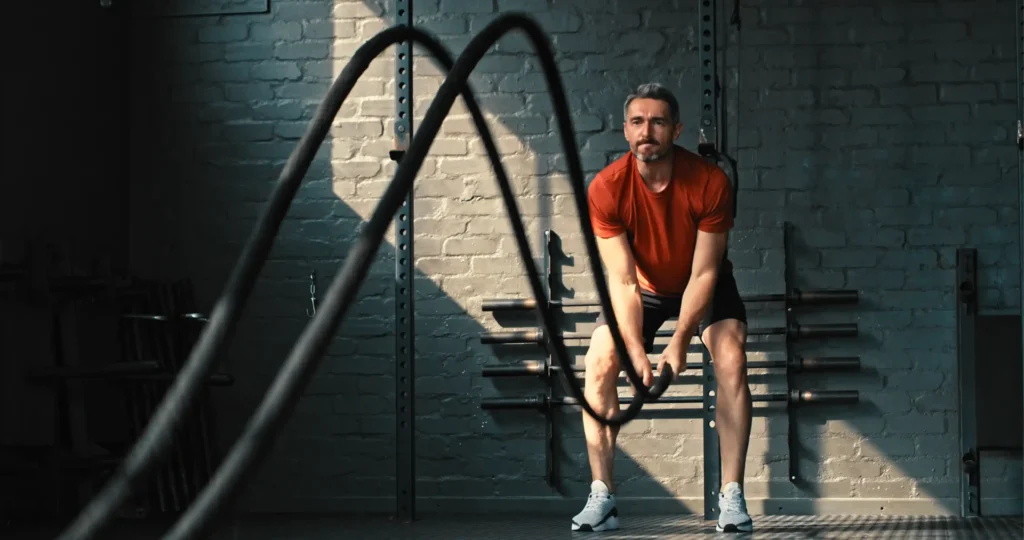
Table of Contents
When it comes to longevity, there’s no one magic pill, no shortcut, and no single supplement that can do what exercise does for your health. If there’s one lever you can pull to live longer, feel stronger, and stay sharper as you age, movement is it.
At ResetOne, we focus on the latest science-backed strategies for longevity—from cutting-edge peptides to personalized nutrition—but no matter what interventions we use, exercise remains the foundation. Why? Because it’s one of the most powerful tools we have for improving lifespan and, more importantly, healthspan—the number of years you stay active, independent, and feeling great.
The Science of Exercise and Longevity
Exercise isn’t just about looking good or losing weight. It’s a full-body, multi-system upgrade. Research consistently shows that regular physical activity lowers the risk of nearly every major chronic disease, including:
- Heart disease – Exercise improves cardiovascular function, lowers blood pressure, and keeps arteries flexible.
- Type 2 diabetes – It enhances insulin sensitivity and helps regulate blood sugar.
- Cancer – Physical activity is associated with a lower risk of several types of cancer, including breast and colon cancer.
- Neurodegenerative diseases – It supports brain health, reduces inflammation, and may help protect against Alzheimer’s and Parkinson’s.
- Osteoporosis and frailty – Strength training maintains bone density and muscle mass, reducing the risk of fractures and falls.
And it doesn’t take hours in the gym to see benefits. Just 30-45 minutes of moderate exercise most days of the week has profound effects on longevity. Even short bursts of movement—like walking after meals or doing bodyweight exercises—contribute to the bigger picture of long-term health.
Muscle Is the Organ of Longevity
One of the biggest factors in healthy aging? Muscle mass. As we age, we naturally lose muscle (sarcopenia) unless we actively work to maintain it. Less muscle means:
- A slower metabolism
- Increased insulin resistance
- Higher risk of falls and fractures
- Less overall resilience to stress and illness
The good news? Muscle loss is preventable. Resistance training—lifting weights, bodyweight exercises, or even resistance bands—is one of the most effective ways to preserve and build muscle, keeping you strong and independent for decades to come.
Why Cardio Still Matters
Strength training builds muscle, but cardiovascular exercise—especially zone 2 training (low-intensity, steady-state movement like walking, cycling, or rowing)—plays a critical role in longevity, too. It improves mitochondrial function, supports heart health, and increases VO2 max (your body’s ability to use oxygen), which is one of the strongest predictors of lifespan.
The key is balance: strength training + cardiovascular training = optimal longevity.
Exercise as the Ultimate Anti-Aging Drug
The most exciting part? Exercise doesn’t just prevent disease—it actively reverses some of the biological markers of aging.
- It increases telomere length, which protects DNA from aging.
- It boosts BDNF (Brain-Derived Neurotrophic Factor), which supports cognitive function and neuroplasticity.
- It improves metabolic flexibility, making it easier for your body to burn fat and maintain steady energy levels.
- It reduces inflammation, a key driver of aging and chronic disease.

How to Make Exercise Work for Longevity
It’s not about crushing yourself in the gym every day—it’s about consistency and the right kind of movement. Here’s a general guideline, but remember – you are the N=1, and your holistic plan with your medical and expert team will ultimately determine your optimal fitness recommendations.
- Strength Training (2-4x per week): Prioritize compound movements like squats, deadlifts, push-ups, and pull-ups to build and maintain muscle.
- Zone 2 Cardio (3-5x per week): Walking, cycling, rowing, or hiking at a low intensity for 30-45 minutes helps build endurance and supports mitochondrial health.
- High-Intensity Training (1-2x per week): Short bursts of high-intensity exercise (sprints, HIIT) improve cardiovascular function and metabolic health.
- Daily Movement: Take the stairs, walk after meals, stretch—small movements add up over time.
The ResetOne Approach: A Personalized Fitness Plan for Longevity
At ResetOne, we don’t believe in a one-size-fits-all approach to fitness. Just like we tailor HRT, peptides, and nutrition to your unique biomarkers, we also personalize fitness recommendations to match your goals, health history, and lifestyle.
The great news? Our fitness team is here to make sure you’re doing the right things to optimize fat loss (not muscle loss), maintain strength, and keep your body resilient for life. Whether you’re new to working out or looking to fine-tune your routine, we’ll help you build an effective, sustainable exercise plan that supports longevity.
The Bottom Line
If you’re looking for the most powerful longevity intervention, exercise is it. It protects against disease, keeps your body strong, and helps you stay active and independent well into old age.
So if you’re focusing on supplements, peptides, or HRT to support your health—that’s great! But none of it replaces movement.
It’s time to pull the most effective lever for longevity and start making exercise a daily priority. Sign up for our beta waitlist and see how a personalized fitness program can make all the difference!
Want to dive deeper into the science? Check out these articles.